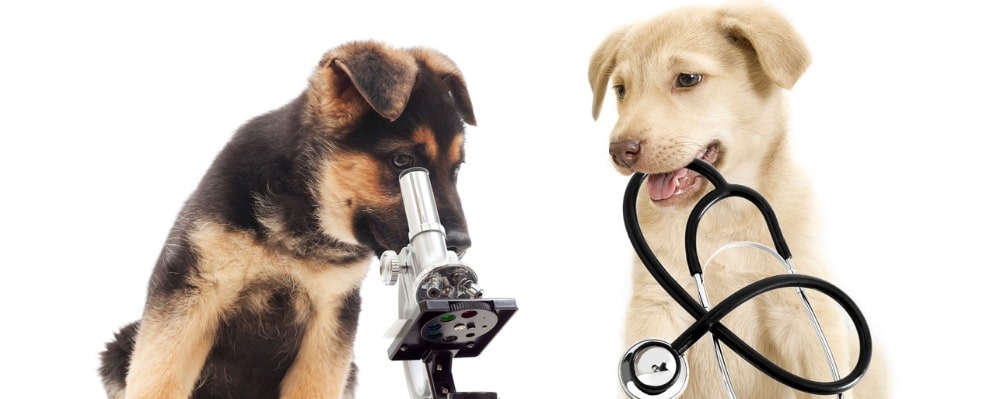
The pet industry has been growing by leaps and bounds in recent years, and this growth was only fueled by the onset of Covid-19. Pet owners in the United States reported spending up to 70 percent more time with their pets during the lockdown and social distancing mandates, and 21 percent spent more money on their pets than before the pandemic.
What’s more, between 2018 and 2020, pet industry expenditures increased by nearly ten billion dollars in the U.S. From food and toys to medical care, pet owners are shelling out more than ever for their animal companions.
Veterinary care is one area, however, that can break the bank when it comes to pet spending. As in human health, medical expenses for pets can be costly and come at the most inopportune times. The is where pet health insurance may help ease the burden of caring for a pet and make prioritizing a pet’s health and wellbeing more financially feasible. The U.S. pet health insurance market has increased steadily, with a 24.2 percent annual growth rate between 2016 and 2020, and a 27.5 percent increase from 2019 to 2020 alone.
Wondering if pet insurance is worth it? In honor of National Pet Insurance Month in September, we spoke with Kristen Lynch, executive director of the North American Pet Health Insurance Association (NAPHIA) who generously offered her thoughts on the matter.
Interview with Kristen Lynch, Executive Director of NAPHIA

Kristen Lynch has been the executive director of the North American Pet Health Insurance Association (NAPHIA) for over ten years.
A trade organization for pet insurance companies, NAPHIA was founded in 2007 to educate and promote the values of pet health insurance not only to pet owners but to the veterinary community and general public alike. NAPHIA’s organizational goals include setting high standards for the industry on service, coverage, and transparency; serving as a central resource for the development, analysis, reporting, and publishing of information on pet health insurance; and ensuring a better quality of life for pets, and their families, through the distribution and promotion of a wide spectrum of pet health insurance coverage options.
In her 30-plus-year career as a brand and marketing consultant and strategist, Ms. Lynch has worked with a diverse portfolio of businesses, including pet insurance companies like Petsecure and Nestle Purina/PurinaCare.
What Are the Types of Pet Insurance?
Pet health insurance coverage comes in three main types:
- Accident and illness (A/I)
- Accident only (AO)
- Wellness
The accident and illness type covers veterinary treatment for changes in a pet’s health such as injury, illness, and disease. This is considered comprehensive coverage. As its name suggests, accident only does not cover illness or disease, and wellness is what is often called routine or preventative animal care. Wellness coverage includes services such as annual exams, vaccinations, and dental work, and may be incorporated in some accident and illness plans.
Regarding the kind of coverage most common among insured pet owners, Ms. Lynch shared that, based on the NAPHIA “State of the Industry Report 2021,” accident and illness is more common than accident only. However, this represents a change in the industry. She explained,
At one time, earlier in the lifecycle of pet insurance as a product in North America, accident only coverage held a greater share of the market than it currently does. The increase in A/I coverage over AO is likely because our relationship with our pets is evolving. Our pets play an increasingly important role in our lives, and today, most responsible pet owners know that illness in pets is far more likely than accidents.
To Have or Not to Have: Reasons Why
The American Veterinary Medical Association (AVMA) endorses pet health insurance coverage to defray the cost of veterinary medical care so that the veterinary profession can continue to provide high-quality veterinary services. In support of their endorsement, the AVMA cites the rising costs of veterinary care associated with technological advances in the field and the resulting higher quality of care offered.
Several articles are provided on the AVMA website to guide pet owners in making decisions about pet health insurance coverage and veterinary professionals in talking to their clients and working with insurance companies.
Ms. Lynch shared anecdotal evidence from insured pet owners on their reasons for having pet health insurance coverage. These include:
- For peace of mind (reduce the stress and worry about their pet)
- To be financially prepared
- To help them say ‘yes’ to their vet’s recommendations
- To provide funds that are specific to the pet’s care
Regarding the reasons most cited by pet owners choosing not to have pet health insurance coverage, Ms. Lynch shared that many pet owners believe they can finance their pet’s care, waited too long to purchase it, can’t afford it, or can’t decide which type to buy.
The Most Common Pet Health Insurance Claims
What are pet owners most often using their insurance policies to cover?
The NAPHIA State of the Industry Report (2021) found that the most common pet health insurance claims for both cats and dogs as of 2020 were for urinary tract infections.
Other ailments pet owners commonly submitted claims for both species include gastroenteritis, diarrhea, and vomiting. Interestingly, this is where the similarity ends. Dog owners also commonly put in claims for health conditions such as allergies, arthritis, and lameness, whereas common claims for cats were related to diabetes, kidney disease, and cancer.
Here is the complete breakdown of common pet health insurance claims for dogs versus cats reported by NAPHIA (2020):
| Dogs | Cats |
|---|---|
| Urinary Tract Infection Otitis/Ear Infection Gastroenteritis Diarrhea Dermatology/Skin Conditions Arthritis Allergies Lameness Vomiting Seizure Ophthalmology/Eye Conditions |
Urinary Tract Infection Diabetes Vomiting/Emesis Kidney Disease Hyperthyroidism Gastroenteritis Diarrhea Upper Respiratory Infection Respiratory Cancer/Growth/Oncology Inflammatory Bowel Disease |
The Number-One Reason to Ensure Pets
Pet health insurance, like human health insurance, provides the opportunity to be prepared in the event of injury or illness and undergo the preventive healthcare needed to avoid the most common and deadly conditions that befall our beloved animals.
For those with the resources, pet health insurance may very well save a significant amount of money in the long run and allow for a longer, more enjoyable life for pets, as well as a dignified end. The truth is that we don’t know what will happen, but we can invest in pet wellness and be prepared in the event that a more serious illness or accident occurs.
Ms. Lynch left us with this:
We all live month-to-month—no matter how much we make, we have tied up, or have plans for our money. Unlike savings or credit, pet insurance gives us the ability to make proactive, confident decisions about our pets’ health and have money specifically dedicated (through coverage) to care and provide for our pets’ health.
What to Look For in a Pet Health Insurance Policy
For those among us struggling to make ends meet, pet health insurance may be a luxury that is out of reach. If within your means, however, some things to keep in mind when shopping around include: species (in addition to dogs and cats, some policies cover exotic species like rabbits, reptiles, ferrets, and birds), breed, treatment costs, coverage (what’s covered/not covered), and the waiting period before coverage goes into effect.
Some other things to consider are:
- Jurisdiction – Where you live determines the type of coverage available to you and the terms/conditions
- Premiums – The cost of your coverage varies according to factors like breed, gender, age, jurisdiction, and veterinary cost
- Coverage for chronic conditions – Know the terms and limits of coverage in instances of chronic illness
- Coinsurance and copays – The amount you pay out-of-pocket also varies between plans and providers, but the most common copay is 80 percent, meaning that pet owners are reimbursed for 80 percent of the amount claimed
Here are additional resources to consult.
From the North American Pet Health Insurance Association:
From the American Veterinary Medical Association:

